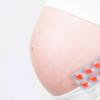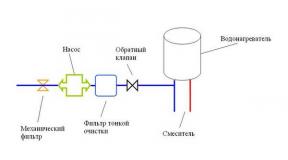Hypertensive disease Ethiology stage form clinic care. Clinic hypertensive disease. III Hypertension Stage
Hypertensive disease is chronic illness, affecting various organism systems, characterized by an increase in blood pressure above the norm, the most common disease of the cardiovascular system.
The disease is based on arterial hypertension. Arterial hypertension is one of the main risk factors for development. ischemic Disease Hearts, brain stroke and other diseases.
Hypertension detects a steady trend towards growth and is due primarily to the fact that hypertensive disease is a disease of civilization, its negative Party (in particular, information boom, increased dark life, hypocinezia, etc.). All this causes neurosis, including cardiovascular, negatively affecting the body and its regulatory mechanisms, including regulation vascular tone. In addition, neurosis and stress lead to excessive emission to the blood of catecholamines and thereby contribute to the development of atherosclerosis.
The causes of the occurrence of hypertensive disease are atherosclerotic lesions of peripheral vessels and a violation of neuroendocrine regulation. There is no complete clarity in understanding the etiology of hypertensive disease. The factors contributing to the development of the disease include:
- * Neriva-mental overvoltage Emotional stress;
- * Hereditary constitutional features,
- * Professional harm (noise, voltage, increased and long-term concentration of attention);
- * Excess body weight and nutritional features (excessive consumption of salted and acute food);
- * Abuse of smoking and alcohol;
- * Age restructuring of regulatory mechanisms (youth hypertension, climax in women);
- * Skull injuries;
- * Hypercholesterolemia;
- * Kidney disease;
- * Atherosclerosis;
- * Allergic diseases etc.
Since the level of blood pressure is determined by the ratio of heart (minute) ejection of blood and peripheral vascular resistance, the pathogenesis of hypertensive disease is formed due to the change in these two indicators, which may be as follows:
- * Increase in peripheral resistance due to either spasm or atherosclerotic damage to peripheral vessels;
- * An increase in the minute volume of the heart due to the intensification of its work or an increase in the intravascular volume of circulating blood (an increase in blood plasma due to sodium delay);
- * Combination of an increased minute volume and increase peripheral resistance.
Under normal conditions, the growth of a minute volume is combined with a decrease in peripheral resistance, as a result of which blood pressure (blood pressure) does not increase. With hypertension (GB), this consistency is violated due to the discordation of the control of blood pressure and therefore the hypereactivity of nervous centers regulating the level of blood pressure leads to increased pressing influences.
For pressing influences (i.e., the increase in pressure) in the vascular bed may develop due to the increase: a) the activity of the sympathetic system; b) the development of renal (renal) pressing substances; c) allocating vasopressin. The increase in the activity of the sympathoyadrenal system is the main factor in increasing blood pressure in the initial period of GB, it is then that the formation of a hyperkinetic type of blood circulation begins, with a characteristic increase heart Emission When there is still a little variable overall peripheral resistance.
Regardless of the clinical and pathogenetic options for the flow of hypertensive disease, the increase in blood pressure leads to the development of arteriosclerosis of the three main organs: heart, brain, kidneys.
It is from them functional state The current and outcome of hypertension diseases depend.
In the latest version of the classification of the arterial hypergenia, recommended by WHO experts, provides for the allocation of three stages arterial hypertension (AG), which precedes border hypertension (labile or transient hypertension) of three degrees of gravity.
I. Classification by level of blood pressure:
- * Normal blood pressure - below 140/90 mm RT. st.;
- * Border AG - AD is within 140/90 - 159/94 mm Hg. st.;
- * Arterial hypertension - blood pressure equals 160/95 mm Hg. Art. and higher.
II. Classification of etiology:
- * Primary arterial hypertension (hypertension);
- * Secondary (symptomatic) hypertension.
According to the nature of the progression of symptoms and the duration of hypertension (GB), it is distinguished: benign GB (slowly progressive, or not progressive) and malignant GB (rapidly progressive). GB of critical and noncritic current is also distinguished.
There is also a division of hypertensive disease for three main degrees: light (soft), moderate and heavy - taking into account the severity and the degree of sustainability of the increase in blood pressure. For each of these three degrees, their limits of increasing diastolic blood pressure are characteristic: 90/100, 100/115, 115 mm RT. Art. respectively.
Central symptom - syndrome arterial hypertension - It is an increase in blood pressure, measured by an auditory method, in short, from 140/90 mm Hg. Art. and higher. Main complaints: Headaches, dizziness, violation of vision, heart pain, heartbeat. Complaints in patients with syndrome of arterial hypertension may be absent, and then it is determined by the state of vascular regions: brain, heart, retina, kidney.
For the disease, a wave-like flow is characterized when periods of deterioration are replaced by periods of relative well-being. However, the manifestations of the disease are gradually growing, organic changes appear and develop. Hypertensive disease can lead to a number of complications: heart failure, ischemic heart disease, stroke, kidney damage.
The flow of GB in many patients (from 20 to 30%) is complicated by hypertensive crises. They are characterized by a sharp rise of blood pressure and may occur at all stages of the disease, while patients besides a sharp rise, the blood pressure may be marked by nausea, vomiting, worsen vision. During the hypertensive crisis, an exacerbation of the IBS is possible (up to the myocardial infarction), and the violation of the cerebral circulation is to stroke.
Classification of hypertensive disease
Under arterial hypertension, an increase in blood pressure is understood (systolic 140 mm Hg. Arterial and / or diastolic 90 mm Hg. Art.), Registered at least two medical examinations, with each of which hell is measured at least twice.
There are several classifications of hypertension, depending on the level of blood pressure, etiology, targeting the target organs, the reasons for the rise of blood pressure. For a practical doctor, the level of blood pressure and its stability is of particular importance.
Hypertensive disease is divided into stage (depending on the degree of damage to organs) and forms (slow and fast-crossing).
Stage I. Lack of objective signs of targeting bodies. AD from 140/90 to 160-179 / 95-114 mm RT. Art.
Stage II. The presence of at least one of the following signs Defeats of target organs:
Left ventricular hypertrophy (according to ECG and Echo kg).
Generalized or local narrowing of retinal arteries.
Proteinuria (20-200 μg / min or 30-300mg / l), creatinine more than 130 mmol / l.
Ultrasound or angiographic signs of atherosclerotic lesions of aortic, coronary, sleepy, iliac or femoral arteries.
Stage III. The presence of symptoms and signs of damage to targets:
Heart: angina, myocardial infarction, heart failure.
Brain: transient violation of cerebral circulation, stroke, hypertensive encephalopathy.
Eye bottom: hemorrhage and exudates with edema of the nipple of optic nerve or without it.
Kidneys: signs of chronic renal failure (CPN) (Creatine more than 2.0 mg / dl).
Vessels: aortic aortic aneurysm, symptoms of occluding damage to peripheral arteries.
Hypertensive clinic
The main symptom of hypertensive disease is a combined increase (proportional increase in systolic and diastolic blood pressure. This causes all its manifestations, and the severity and stability of arterial hypertension determine the severity of the flow and stages of the development of the disease. The latter underlies the classification of hypertensive disease proposed by A. L. Myasnikov. There are two variants of flow (benign and malignant) and three stages of the disease, each of which is distinguished by two phases.
Stage I. Phase A is pre-frethonic when inclinations are found to arterial hypertension, i.e., hyperreactivity as a manifestation of ram neurosis. The phase of plain stage is transient hypertension, which manifests itself with episodes of increased blood pressure, easily returning to the norm under the influence of peace and rest. Consequently, this stage corresponds to the stage of becoming a hypertensive disease with the leading neurohumoral mechanism of violation of the regulation of the vascular tone.
Stage II. Phase A is characterized by significant hesitations of blood pressure, not declining, however, spontaneously to normal. The phase is blocked by the progressive increase in the arterial hypertension due to the growing increase in the total peripheral resistance of the vessels, first of all - the kidney vessels.
These manifestations of the disease correspond to the period of stabilization and progression of arterial hypertension with the prevalence of hormonal mechanisms for the regulation of vascular tone.
III stage. Phase A is determined by the emergence of compensated dystrophic changes in parenchymal organs. In the phase, these changes become decompensated and lead to persistent, severe violations of the functional state of affected organs.
Thus, the II and III stages of hypertensive disease distinguish the inclusion of hormonal mechanisms for fixing and stabilizing arterial hypertension - a renin angiotensin-aldosterone system. Therefore, for judgment on the activity of these mechanisms, the hyperrenine, norosenine and hyphenine forms of hypertension - respectively, the profile of this enzyme in the blood is distinguished.
The malignant form of hypertensive disease (in a modern understanding - malignant hypertensive syndrome) is characterized by an increase in pressure of more than 230/130-140 mm Hg. Art.
There are also three severity of arterial hypertension in hypertension - light, middle degree and severe, due to the magnitude of the increase in diastolic blood pressure: 95-100 mm Hg. Art. - Light, 100-115 - moderate severity, 115-130 - severe arterial hypertension.
Subjective clinical manifestations Hypertensive disease is due to microcirculatory disorders in the parenchymal organs of the most important functional systems - brain, heart, kidneys.
In the early stages of hypertension, an increase in hell is accompanied by the emergence. general weakness, fast fatigue, appearance of headaches, dizziness. Characterized pulsating headaches in the occipital region. Often there is a breakdown of sleep, emotional lability. Later join the weakening of memory and transient brain circulation disorders. For severe course - Ischemic and hemorrhagic strokes.
Frections complaints of pain in the heart area. The latter can be due to sclerosis of the coronary arteries and then bear coronary features, i.e., angina pain. With unchanged coronary vessels, cardialgia differ in constancy, do not irradiate and not stop nitrates. Then they reflect deep metabolic disorders in myocardium due to a sharp increase in blood pressure, long-term intake of hypotensive drugs, heart glycosides or saluretics leading to potassium deficiency in cardiomyocytes.
With a physical study, tachycardia is detected, a solid, strained pulse, an increase in the left ventricle due to hypertrophy of it. Auscultative determines the muffledness of the I tone on the top and the emphasis of the second tone on the aorta, often systolic noise at the top and above the aorta. With a severe flow of hypertensive disease, the lesion of myocardium leads to the emergence of arrhythmias in the form of extrasystole and the flickering of atrial - paroxysis or stable arrhythmia.
Paraklinic studies are detected by changes in the muscles of the heart of radiologically, on ECG and EchoCg in the form of left ventricular hypertrophy, increasing the excursions and the speed of reducing the walls of it, the rhythm of the heart rhythm and repolarization processes. Moreover, these changes are revealed already in the early stages of the development of the disease and progress over time, reflecting the duration and severity of it. In this regard, it is proposed to introduce the concept, by analogy with the EBS, "Hypertensive heart disease".
Hypertonic disease (essential hypertension) together with border hypertension is about 80 - 85% of all cases of increased blood pressure.
Etiology, pathogenesis of hypertensive disease
The reasons and mechanisms of the formation of the disease are not good to the end. Most researchers give crucial importance to the combination of hereditary predisposition with the impact of some external factors. Hyperactivity of higher vegetative centers or violation of the deposit of norepinephrine in sympathetic terminals creates prerequisites for the occurrence of arterial border-type hypertension. Defects of renal presorrow (renin) or depressor (prostaglandins, kinines) systems - the path to the transition of border hypertension to hypertensive disease, i.e., to securing systemic arterial hypertension as a sustainable and progressive disease. Actually etiological factors resulting in the complex and diverse mechanisms of increased blood pressure, studied less fully. G. F. Langomas put forward a theory of a decisive role in the formation of hypertensive diseases of mental overvoltage and mental trauma. Other possible reason Diseases - "salt factor" (the role of ions N3 in hypertensive reactions).
A number of authors refer to the "reasons" of hypertension obesity; Epidemiological studies confirm the existence of the connection between the degree of obesity and an increase in blood pressure, however, an increase in body weight should rather be considered to be the number of predisposing than actually causal factors.
Symptoms, the flow of hypertensive disease
The disease relatively rarely begins in persons younger than 30 years and over 60 years old (a sustainable increase in blood pressure in a young man - the basis for the persistent search for symptomatic hypertension; high systolic pressure during normal or reduced diastolic pressure in elderly people is often associated with atherosclerotic aorta seal) proceeds Chronically - with degradation and improvement periods. There are slowly progressive ("benign") and quickly progressive ("malignant") current. In slow progression, the disease passes 3 stages.
The first stage of hypertension
(Easy) is characterized by relatively small lines of blood pressure in the range of 160-179 mm Hg. Art. For systolic, 95-104 mm Hg. Art. - for diastolic pressure. The pressure level is very unstable, during the rest gradually comes its spontaneous normalization, but the disease is already fixed and inevitably returns. Patients are mainly uncruised headaches, noise in the head, sleep disturbance, reduced mental performance. Occasionally arise unisexual dizziness, nasal bleeding. Typically, there are no signs of hypertrophy of the left ventricle, the ECG is not very different from the normal, the transient narrowing of the arteriole on the eye day may be detected; Renal functions are not violated.
Second stage of hypertension (average) differs from the previous higher and sustainable blood pressure level, which at rest is in the range of 180-200 mm RT. Art. For systolic and 105-114 mm Hg. Art. For diastolic pressure. For this stage, hypertensive crises are more typical. As a rule, the signs of the left ventricular hypertrophy of the left ventricle are detected (x-ray and on ECG), it is determined by weakening I tone and a non-permanent III tone in the top of the heart, the focus of the second tone on the aorta. From Stro-Rona CNS there are a variety of manifestations of vascular failure, transient Ishimi brain, brainstorms are possible, which are based on atherosclerosis of vessels. On the eye day, in addition to the narrowing of the arteriole, there are surveillance of veins, their expansion, hemorrhage, exudates. Urine tests usually do not have deviations from the norm, but the renal blood flow and the speed of glomerular filtration are reduced.
Third stage hypertensive disease (severe) corresponds to the period of the disease, when arteriolosclerotic changes are formed in various organs; At the same time, atherosclerosis of larger vessels is progressing, in particular aorta, coronary arteries of the heart, the main arteries of the brain, kidney and other arteries. Hell reaches a high level: 200-230/115-129 mm RT. Art. Pressures are possible and higher than the indicated limits, which is often accompanied by a picture of a hypertensive crisis. Spontaneous normalization blood pressure does not happen.
Clinical picture hypertensive disease
determined by the depth of the so-called target organs: Hearts (chest toad, myocardial infarction, acute or chronic left vehicle failure), brain (ischemic and hemorrhagic infarction, encephalopathy), eyeboard (angiore-tinopathy 11 - 111 types), kidney (renal decrease blood flow, glomerular filtration, non-large proteinuria and hematuria). In some patients, despite a significant and sustainable increase in blood pressure, there are no severe vascular complications for many years.
Distinguish several clinical and biochemical options or forms of hypertension. Hyperaderergic
the form is more often observed in the initial period of hypertensive disease, characterized by tachycardia, high unstable blood pressure with the predominance of systolic hypertension, sweating, painting the face, the feeling of pulsation patients in the head, heart-beats, chills, anxiety, internal stress. Vazospadic
(angiotensin-dependent) The form is characterized by high diastolic pressure with a decrease in pulse amplitude, rhine angiohetinopathy type III, small proteinuria, frequent vascular complications. The volume (sodium) of the dependent form can be recognized by such signs as the edema of the eyelids and the endlessness of the face in the morning, swelling of the hands, numbness of the fingers, paresthesia, oscillations of diuresis with transient oliginia; Sometimes it is possible to identify a clear connection between the rise of blood pressure and the use of patients on the eve of salty food and a large amount of fluid; Cardiac and brain seizures arise often.
To diagnose hypertensive disease and its differentiation with symptomatic hypertension in the conditions of polyclinics, it is necessary:
- 1) repeated measurements of the Hell on the shoulder and the thigh, in the standing position and lying,
- 2) the definition of neurological status,
- 3) Study of the Eye Dna,
- 4) urine test,
- 5) ECG,
- 6) X-ray study of the heart and aorta,
- 7) the radiography of the skull and the cervical spine (according to indications),
- 8) Sowing urine and consultation of the urologist (if necessary).
In the therapeutic separation of a large hospital additionally determine the concentration of potassium and sodium ions in the blood plasma, daily potassium and is carried out, carried out excretory urography, isotopic renography, kidney scan (according to indications).
Treatmenthypertensive disease
Patients with II -III stage of the disease need constant treatment, almost throughout life. In the I stage of the disease, intermittent, coursework, if efficiently, is permitted. The conditions for the success of therapy; Rational mode labor activity and recreation, determined by the doctor together with the patient, restriction of the cook salt up to 4-5 g per day; With a tendency to delay water, the amount of salt can be reduced to 3 g per day. The total number of fluid consumed is 1.2-1.5 liters per day. If patients often take diuretics, their water-salt dieter can be expanded. In obesity, it is necessary to restrict in the diet of coals and fats. Medicinal treatment occupies the main place in complex therapy Hypertensive disease 11 - 111 stages. Diuretics (saluretics), sympatholic agents and peripheral vazodi-latators have leading importance. Selection of medicines and their doses, combinations of drugs individual. It must be borne in mind that persons with the volume (sodium) of the dependent form of the disease are especially connected to diuretics.
In the treatment of patients in the I stage of the disease, in addition to soothing means (valerian, bromides, tranquilizers, etc.), Radolfia preparations and beta-adrenergic receptor blockers are widely used. The first are prescribed in the form of a report or its analogues. The dose of reservoir does not exceed 0.25 mg for one-time reception at night. After decreasing blood pressure, the reserpine dose is reduced to 0.1 mg per night. Even with such small doses are observed. side effects (drowsiness, depression, Parkinsonism, laying of nasal moves, etc.), so during remission treatment reserpine is better to temporarily interrupt. Anaprilin (Propranolol, Inderal, Obizant) or Ospprenolol (trazicor) are prescribed 10-20 mg 2 - 4 times a day; The hypotensive effect comes slowly, more often at the end of the 1st week of the 2nd week. Defense of the heart rhythm may precede the hypotensive effect. For some patients, even in the I stage of the disease, these doses of beta-adrenoblockers may be insufficient: in these cases, it is either increased by a dose, or added to the treatment chart of hypothiazide at 50-100 mg once every 5 -7 days.
In the treatment of the II stage of hypertension, almost always requires a combination medicinal preparations, usually two, sometimes three. Diuretics of hypothiazide (50-100 mg) is used, which patients take either every day or with interruptions from 1 to 3 days. Instead of hypothiazide, other saluretics can be used. The circle of sympatholic tools is expanding: anaprilin to 160 mg per day, divided into 2-4 receptions, or methyloft (aldometh) 250 mg 1 - 3 times a day, or clonidine (hemiton, katapresan, clonidine) at 0.1-0, 15 mg 1 - 3 times a day. The increase in doses of these drugs is produced gradually depending on the individual sensitivity of patients. If there are contraindications to hypothiazid or other saluretics ( diabetes) Knironolacton (Veroshpiron) are prescribed 25 mg 2-6 times a day. The 3rd preparation is added to the diagram of treatment - the peripheral vasodilator is added - if the combination of a sympatholic diuretic is not effective, either if it is impossible to increase the dose of sympatholic to the required level. Aprescine (hydralazine) is used as a peripheral vasodilator at 25 mg 2-4 times a day. Saving high doses depends on the result achieved. During the period of normalization or a distinct reduction, the number of drugs and their doses are reduced gradually; Sudden cancellation of the drug (especially clofelin!) Sometimes leads to a hypertonic crum.
The task of treating hypertensive disease in stage III - in addition to the obligatory decrease in the blood pressure, continuously maintaining the coronary and cerebral circulation, the contractile strength of the Mio Card at a satisfactory level. 3 drugs are prescribed at once: Diuretik [Hypothiazide of 100mg daily, chlorotalidone (hygrotone) of 50-100mg every other day, Klopamide (Brinaldix) for 20 mg daily, spironolactone (Veroshpiron) at 100-150 mg daily], sympatholic [Anagelin 160 -200 mg per day, methylofto 750-1000 mg per day, clofelin at 0.45 - 0.6 mg per day, octadine (guanethidine, isobarin) once in the mornings in a gradually increasing dose from 25 to 75 mg per day], Peripheral vasodilator (Aprescin at 25 mg 4-6 times a day, minox-dil 5 mg 4 times a day, pratosin at 1 - 2 mg 3 times a day). The most effective scheme is a combination of hypothiazide, propranolol (or other beta-adrenobloclater) and UP-Rexin: With the help of this combination, with properly selected doses, most patients with hypertension achieve normalization or a significant decrease in blood pressure, without fear of orthostatic collapse, characteristic of octaline.
Forecasthypertensive disease
Perennial epidemiological observations show that even moderate increase in blood pressure increases a few times the danger of brain stroke and myocardial infarction in the future. The frequency of vascular complications depends on the age in which a person is ill and hypertension; The forecast for young people is burdened by more than for middle age. In men of young and mid-years in the I stage of the disease, the forecast is less beneficial than women. During the course and outcome of the disease, the level and stability of blood pressure are influenced, the speed of the progression of atherosclerosis, concomitant diseases (diabetes). Early therapy and effective constant control of the level of blood pressure significantly improve the forecast.
Directory of a practical doctor / ed. A. I. Vorobyova. - M.: Medicine, 1982
Arterial hypertension is the most important risk factor for the development of cardiovascular complications. According to NMC PM, 40% of Russians aged 18 and older have increased blood pressure.
Compared to those who have no arterial hypertension, in patients with increased pressure Ischemic heart disease, it is 6 times more common - cardiac insufficiency and 7 times more often - a stroke of the brain.
Arterial hypertension is a very cunning disease, as it is very often asymptomatic. However, it has been scientifically proven that patients with arterial hypertension, even with well-being, serious changes from vital organs - hearts, kidneys, vessels can be identified. Unfortunately, the first manifestation of the disease can be the development of myocardial infarction and brain strokes. It is no coincidence that the arterial hypertension is called a "silent killer."
Therefore, if you periodically increase the pressure (the upper systolic above 140 mm.rt.st. and / or the lower diastolic above 90 mm.rt.st.), you must immediately consult a doctor in order to identify changes in a timely manner.
Why do patients choose us?
- Our clinic employs doctors who build their work with patients based on modern scientific knowledge. This is precisely what allows you to determine the exact amount of examination required for a particular patient (no more, no less) and appoint adequate treatment. Our specialists will give you recommendations not only by medical treatment arterial hypertension, but also by non-drug methods. This is very important, given the frequent combination of arterial hypertension with other risk factors (excessive body weight, increasing cholesterol, smoking).
- We use everything modern methods diagnostics. Their high accuracy and manufacturability provides proven effectiveness in determining the state of your health. The research includes ECG, heart ultrasound, ultrasound dopplerography and duplex scanning of the main arteries of the head, daily monitoring of blood pressure, general and biochemical blood test, urine analysis.
Heads a well-known specialist in the field of diagnosis and treatment of arterial hypertension, Doctor of Medical Sciences, Professor David Vasilyevich Nebiiridze, one of the authors Russian recommendations on the diagnosis and treatment of arterial hypertension.
Taking patients in our clinic passes from the following scheme:
1. You will have an experienced cardiologist, a candidate of medical sciences, which will collect anamnesis of the disease, will make all necessary appointments, and will be a treatment plan.
2. If necessary, you will be represented by the head of the clinic Professor Nebiiridze D.V., who will make adjustments to the plan of surveys and treatment.
3. If during the survey you will have accompanying diseases or complications (violation of the rhythm of the heart, heart failure) or it will take hospitalization, we will recommend you qualified specialists.
We guarantee such a survey that will help not only objectively assess the condition of your health and appoint adequate treatment, but also to avoid unnecessary material spending, which is very important in the conditions of the economic crisis.
Remember, arterial hypertension is a very dangerous and insidious disease and therefore timely appeal to our clinic and the early start of treatment minimizes you with the risk of developing cardiovascular complications. Do not postpone the goal!
Hypertensive disease is a chronic disease that affects various organism systems, characterized by an increase in blood pressure above the norm, the most common disease of the cardiovascular system.
The disease is based on arterial hypertension. Arterial hypertension is one of the main risk factors for the development of ischemic heart disease, brain stroke and other diseases.
Hypertension detects a steady tendency to increase and is associated primarily with the fact that hypertensive disease is a disease of civilization, its negative sides (in particular, the information boom, which has increased darkness, hypocinezia, etc.). All this causes neurosis, including cardiovascular, negatively affecting the body and its regulatory mechanisms, including the regulation of vascular tone. In addition, neurosis and stress lead to excessive emission to the blood of catecholamines and thereby contribute to the development of atherosclerosis.
The causes of the occurrence of hypertensive disease are atherosclerotic lesions of peripheral vessels and a violation of neuroendocrine regulation. There is no complete clarity in understanding the etiology of hypertensive disease. The factors contributing to the development of the disease include:
* Neriva-mental overvoltage Emotional stress;
* Professional harm (noise, voltage, increased and long-term concentration of attention);
* Excess body weight and nutritional features (excessive consumption of salted and acute food);
* Abuse of smoking and alcohol;
* Age restructuring of regulatory mechanisms (youth hypertension, climax in women);
* Allergic diseases, etc.
Since the level of blood pressure is determined by the ratio of heart (minute) ejection of blood and peripheral vascular resistance, the pathogenesis of hypertensive disease is formed due to the change in these two indicators, which may be as follows:
* Increase in peripheral resistance due to either spasm or atherosclerotic damage to peripheral vessels;
* An increase in the minute volume of the heart due to the intensification of its work or an increase in the intravascular volume of circulating blood (an increase in blood plasma due to sodium delay);
* Combination of an increased minute volume and increase peripheral resistance.
Under normal conditions, the growth of a minute volume is combined with a decrease in peripheral resistance, as a result of which blood pressure (blood pressure) does not increase. With hypertension (GB), this consistency is violated due to the discordation of the control of blood pressure and therefore the hypereactivity of nervous centers regulating the level of blood pressure leads to increased pressing influences.
For pressing influences (i.e., the increase in pressure) in the vascular bed may develop due to the increase: a) the activity of the sympathetic system; b) the development of renal (renal) pressing substances; c) allocating vasopressin. The increase in the activity of the sympathoyadrenal system is the main factor in the increase in blood pressure in the initial period of GB, it is then that the formation of a hyperkinetic type of blood circulation begins, with a characteristic increase in cardiac output when there is still a little variable overall peripheral resistance.
Regardless of the clinical and pathogenetic options for the flow of hypertensive disease, the increase in blood pressure leads to the development of arteriosclerosis of the three main organs: heart, brain, kidneys.
It is from their functional state that the course and the outcome of hypertensive diseases depend.
In the latest version of the classification of arterial hypergenia, recommended by WHO experts, provides for the allocation of three stages of arterial hypertension (AH), which precedes border hypertension (labile or transient hypertension) of three degrees of gravity.
I. Classification by level of blood pressure:
* Normal blood pressure - below 140/90 mm RT. Art.;
* Border AG - AD is within 140/90 - 159/94 mm Hg. Art.;
* Arterial hypertension - blood pressure equals 160/95 mm Hg. Art. and higher.
II. Classification of etiology:
* Primary arterial hypertension (hypertension);
* Secondary (symptomatic) hypertension.
According to the nature of the progression of symptoms and the duration of hypertension (GB), it is distinguished: benign GB (slowly progressive, or not progressive) and malignant GB (rapidly progressive). GB of critical and noncritic current is also distinguished.
There is also a division of hypertensive disease for three main degrees: light (soft), moderate and heavy - taking into account the severity and the degree of sustainability of the increase in blood pressure. For each of these three degrees, their limits of increasing diastolic blood pressure are characteristic: 90/100, 100/115, 115 mm RT. Art. respectively.
The central symptom of arterial hypertension syndrome is an increase in blood pressure, measured by an auditory method, in short, from 140/90 mm Hg. Art. and higher. Main complaints: Headaches, dizziness, violation of vision, heart pain, heartbeat. Complaints in patients with syndrome of arterial hypertension may be absent, and then it is determined by the state of vascular regions: brain, heart, retina, kidney.
For the disease, a wave-like flow is characterized when periods of deterioration are replaced by periods of relative well-being. However, the manifestations of the disease are gradually growing, organic changes appear and develop. Hypertensive disease can lead to a number of complications: heart failure, ischemic heart disease, stroke, kidney damage.
The flow of GB in many patients (from 20 to 30%) is complicated by hypertensive crises. They are characterized by a sharp rise of blood pressure and may occur at all stages of the disease, while patients besides a sharp rise, the blood pressure may be marked by nausea, vomiting, worsen vision. During the hypertensive crisis, an exacerbation of the IBS is possible (up to the myocardial infarction), and the violation of the cerebral circulation is to stroke.
Source http://studwood.ru/1739101/meditsina/gipertonicheskaya_Bolezn_etiologiya_klinika_patogenez_klassifikatsiya.
4. Hypertensive disease (etiology, pathogenesis, classification, clinic)
Chronically flowing disease, the main manifestation of which is arterial hypertension syndrome, not related to the presence of pathological processes, in which the increase in blood pressure is due to known reasons.
Etiology. Neriva-mental overvoltage, violation of the function of the sex glands.
Pathogenesis. There is a violation of the biosynthesis of sympathetic amines, as a result of which the tone of the sympatheadary system increases. Against this background, the pressing mechanisms of the renin-angiotensin-aldosterone system and the oppression of depressor factors are activated: prostaglandins A, E, kininic system.
Classification. IN clinical conditions The disease is divided into the severity of arterial hypertension, the degree of risk of damage to the targets, the stage of development of hypertensive disease.
Clinic. In hypertension, the stage I appears periodic headaches, noise in the ears, sleep disorder. The mental performance is reduced, dizziness, nasal bleeding are noted. Cardialigia is possible.
In the left chest branches, there may be high-amplitude and symmetric teeth, the minute volume of the heart remains normal, increasing only during exercise. Hypertensive crises are developing as an exception.
With hypertension of stage II, frequent headaches appear, dizziness, shortness of breath with physical Loads, Sometimes the attacks of angina. Niccountura is possible, the development of hypertension-zyon crises.
The left border of the heart is shifted to the left, the tops of the i tone are weakened, the focus of the second tone is listened, sometimes a pendulum rhythm.
With hypertension of the III stage, two options are possible:
1) the development of vascular disasters in target organs;
2) a significant reduction in the minute and impact volumes of the heart high level peripheral resistance.
In the malignant form of hypertensive disease, extremely high figuration pressure numbers are noted (diastolic blood pressure exceeds 120 mmrt. Art.). The renal failure progresses, the vision is reduced, there are weight loss, symptoms from the CNS, changes in the rheological properties of blood.
Hypertensive crises. Sudden sharp increase in blood pressure. Crims are two types.
Type I crisis (hyperkinetic) is short-term. It is manifested by a sharp headache, dizziness, reducing vision, nausea, less often vomiting. It is characteristic of the excitement, heartbeat and trembling in the whole body, Pollakiuria, by the end of the crisis there is a Liuria or a rich liquid stool. Systolic blood pressure increases, pulse pressure increases.
Crisis II type (eu- and hypokinetic) is heavy. It develops gradually, lasts from several hours to 4-5 days and more. Conducted circulatory fluid brain hypoxia, characterized for later stages of hypertension. It is manifested by weight in the head, sharp headaches, sometimes with paresthesias, focal violations of cerebral circulation, aphasia. There may be pain in the heart of an angin nature, vomiting, attacks of cardiac asthma. Significantly increases diastolic pressure. Arterial pressure must be reduced gradually within a few hours.
Source http://med.wikiReading.ru/7025.
Hypertensive disease (GB), also called essential hypertension (EG), is a disease characterized by the level of blood pressure (AD)\u003e 140/90 mm Hg. Art., What is due to the sum of genetic and external factors and is not associated with any independent lesions of organs and systems. The basis of GB is a breaking of normal neurogenic and / or humoral regulation of a vascular tone with a gradual formation of organic changes in the heart and vascular bed.
GB is one of the most common diseases of the cardiovascular system. It has been established that GB suffer 20-30% of the adult population. With age, the prevalence of the disease increases and reaches 50-65% of people over 65 years.
Etiopathogenesis.
The theory of neurogenic nature of hypertensive disease was nominated by Langom in 1922 and received confirmation in Strazhessko's research, meatyanov, Tareev and other researchers. Due to stress, permanent emotional overloads, an increase in the muscular tone of the vascular wall is occurring through vascular centers, the narrowing of the lumen of small arteries. In addition, the activity of the sympatho-studary system increases, tachycardia develops, the work of the left ventricle increases, its emission increases. These phenomena lead to an increase in blood pressure. However, so that hypertension is rack, this is not enough - it is necessary to include the following mechanism - humoral. It has been proven that with kidney ischemia, and it will be observed in the arteriole spasme, it produces a renin - a thing that stimulates the production of angiotensin (renin, affecting angiotensinogen, contributes to its transformation into angiotensin-1, which, in its own The queue under the influence of ACE enters its active form - angiotensin-II). Angiotenzine II has a powerful vasoconstrictor effect, increases the total peripheral resistance and blood pressure, stimulates the production of antidiuretic hormone (vasopressin) and aldosterone, which, in turn, leads to a decrease in sodium selection with urine and fluid delay. In addition, angiotensin II stimulates the production of norepinephrine and myocardial hypertrophy. Thus, hypertension becomes more resistant. The activity of the depressant apparatus (carotid sinus and the aortic arc), on the contrary, decreases, its sensitivity decreases, which also contributes to an increase in blood pressure.
Factors contributing to the development of hypertensive disease (risk factors):
1. Hereditary constitutional features;
2. Excessive body weight;
3. intoxication (smoking, alcohol);
4. Features of nutrition (overloading salt, magnesium deficiency, potassium and calcium, as well as abuse sweets, animal fats and caffeine);
5. Insufficient physical activity;
6. Age Perestroika (Climax period);
7. Skull injuries;
8. Professional harm.
Classification.
Source http://lektsii.org/6-19844.html
Views
8257
Medical Directory → Hypertensive disease
- Disease of the cardiovascular system, the main manifestation of which is the increase in blood pressure.
Causes of hypertension
For the first time, hypertensive disease was described by the Soviet scientist G. F. Langom in 1922. The causes of hypertensive disease are not yet fully found out. There are two points of view on its occurrence. The first comes from the leading role of violation of the nervous regulation of the vascular tone against the background of a number of factors predisposing to the occurrence of hypertensive disease. Such factors include: hereditary insufficiency of hormonal mechanisms regulating the state of the vascular system; transferred in the past diseases of the kidneys, due to circulatory disorders in them, age-related changes of vessels (especially brain and kidney); Endocrine disorders when climax.
Neriva-mental stress, chronic overwork, not causing in the case of stability of humoral mechanisms of any pathological changes, in the presence of predisposing factors lead to the arteriole spa and increase blood pressure. Increase muscle tone blood vessels (arterioles), with the rise of blood pressure, occurs due to the activation of the renin - hypertenzine system (a group of biologically active substances, the interaction between which causes an increase in blood pressure), an increase in the blood pressure of aldosterone, a change in sodium exchange, changing blood circulation in the head brain, in kidney, etc. All these changes are associated with a violation of the nervous regulation of these processes.
The second point of view proceeds from the position of the role of pressor (increases blood pressure) and depressor kidney factors in increasing the arterial blood pressure. The kidney contains in itself. YUKSTA-Glomerural apparatus, which causes the production of a pressing factor - Renin. In turn, Renin specifically stimulates the production of adrenal cortex of the second factor - aldosterone regulating water exchange, exchange of potassium and sodium ions and affecting the content of these elements in the smooth muscles of blood vessels.
An increase in sodium content in the smooth muscles of vessels increases their tone, which determines the increase in blood pressure. At the same time, aldosterone blocks sodium derivation paths from the body. Thus, the renal factor may affect the increase in blood pressure. However, the kidney has both depressants that downgrade blood pressure with properties. The depletion of these properties can lead, according to adherents of the renal theory, to the predominance of pressing action and the development of hypertensive disease
The frequency of incidence of hypertensive disease increases with age. So, under 40 years most often sick, after 40 years, the incidence among women and men is approximately the same.
Hypertonic disease - one of the most frequent diseases Cardiovascular system of the urban population, among which is found almost 3 times more often than far from rural residents. More often people are sick, the work of which is more connected with neuropsychiatric tension: engineering and technical staff, work accurate industries, communication workers, transport, etc.

Hypertensive clinic
In terms of and character clinical picture Hypertensive disease is divided into 3 stages.
For the 1st, "transitory", the stage is characterized by a short-term increase in blood pressure, which occurs usually after overwork or nervous overvoltage. Blood pressure is rapidly normalized without the use of special medicines Under the influence of recreation or soothing (sedative) drugs. During this period, patients complain of increased nervous excitability, headaches, dizziness, heartbeat. There are some increase in the heart, sometimes systolic noise at the top; On the electrocardiogram - signs of the beginning of the myocardial hypertrophy, the 2nd stage is divided into two phases. For the 1st phase (labile hypertension), fluctuations in blood pressure levels from a minor increase to high digits. In the 2nd phase (stable hypertension) blood pressure is installed on high numbers. The 1st phase refers to the disease when blood pressure decreases in peace and the use of ordinary soothing means.
In the 2nd stage, in addition to characteristic of hypertensive disease, symptoms - noise in ears, dizziness, headaches, heartbeats, signs of heart failure (shortness of breath, edema, tachycardia, arrhythmia) and coronary failure (sternulating pain and heart disease, can appear. Development of myocardial infarction).
The 3rd stage is characterized by the development of arteriolosclerosis with the defeat of the kidneys, hearts and vessels of the brain against the background of high and resistant hypertension. In this stage, the development of renal failure, scar changes in myocardium, violation of blood supply in the brain is possible.
During hypertensive disease, hypertensive crises are distinguished, which are a short-term exacerbation of the disease. The sudden sharp increase in blood pressure is characteristic of them, accompanied by headaches, dizziness, vomiting, tachycardia, chills, sometimes marked violations. In hypertensive crises, a violation of coronary and brain circulation is possible (myocardial infarction, stroke).
Treatment of hypertension
In the 1st stage - sufficient sleep, the elimination of nervous, mental and physical overloads; Prohibition alcoholic beveragessmoking; the use of soothing means; In later stages - reduced blood pressure, soothing and snow pillsdiet. Surgery Wide distribution did not receive.
Prevention of hypertension
Possible elimination of nervous overvoltage, mental traumators, rational organization of labor and recreation regime, sufficient sleep.
Source http://nourriture.ru/content/meditsinskiy-spravochnik/gipertonicheskaya-Bolezn/



















